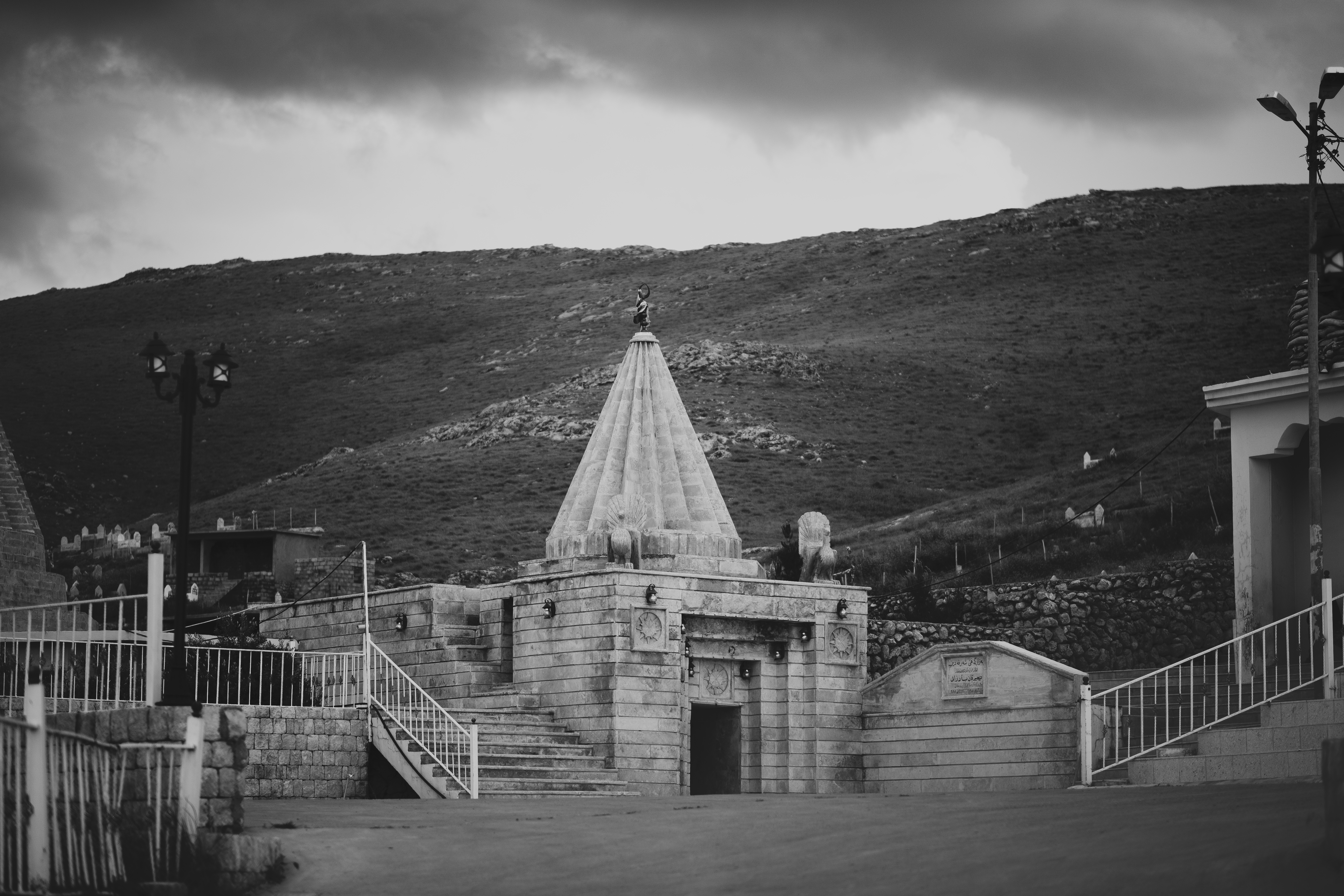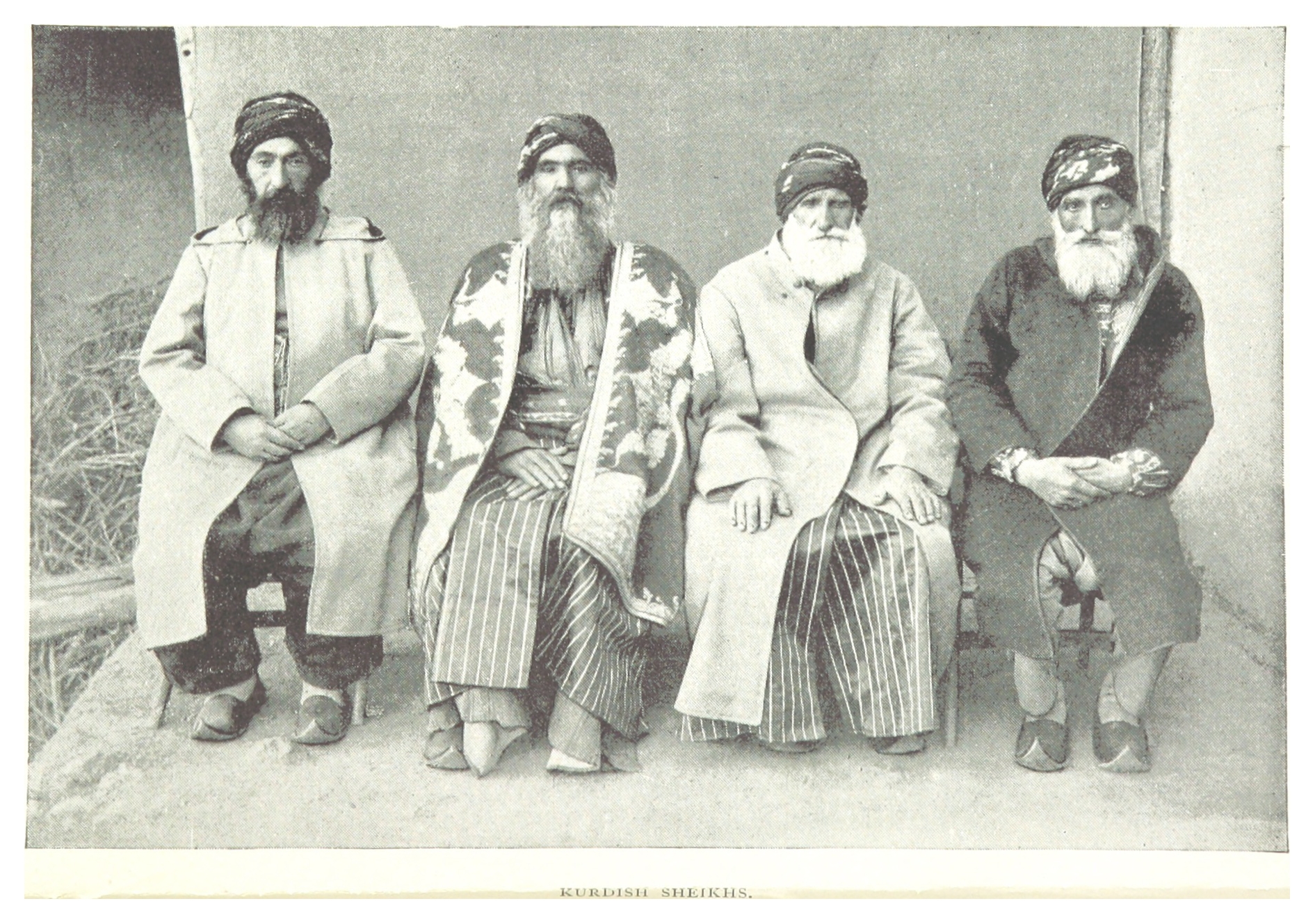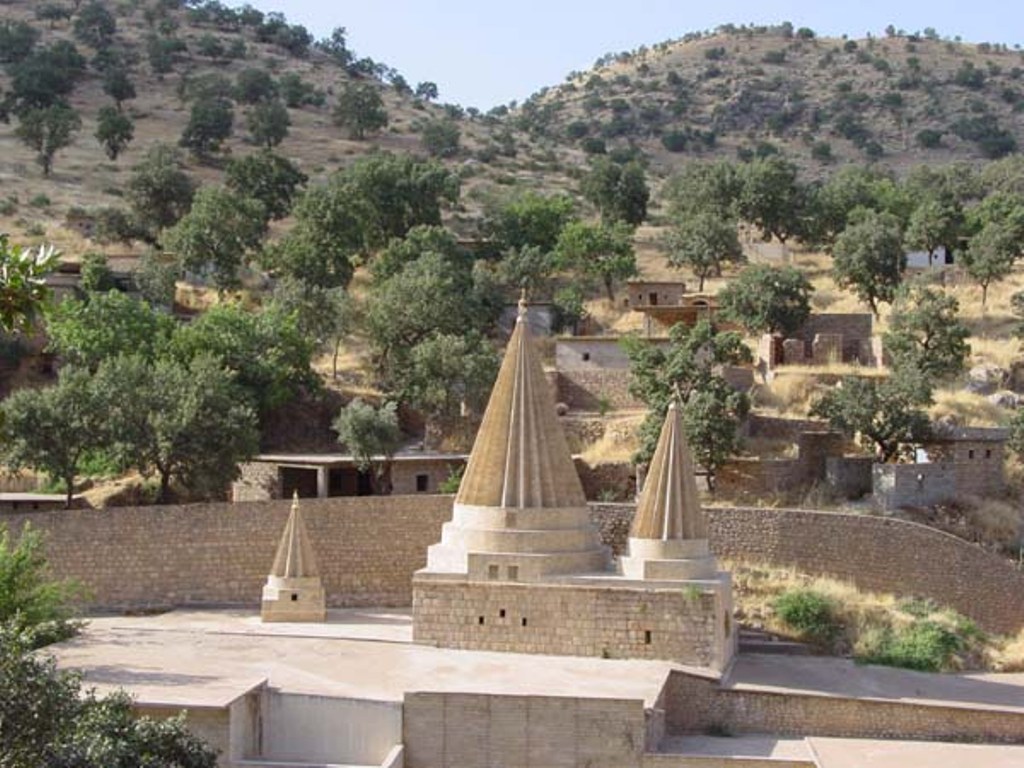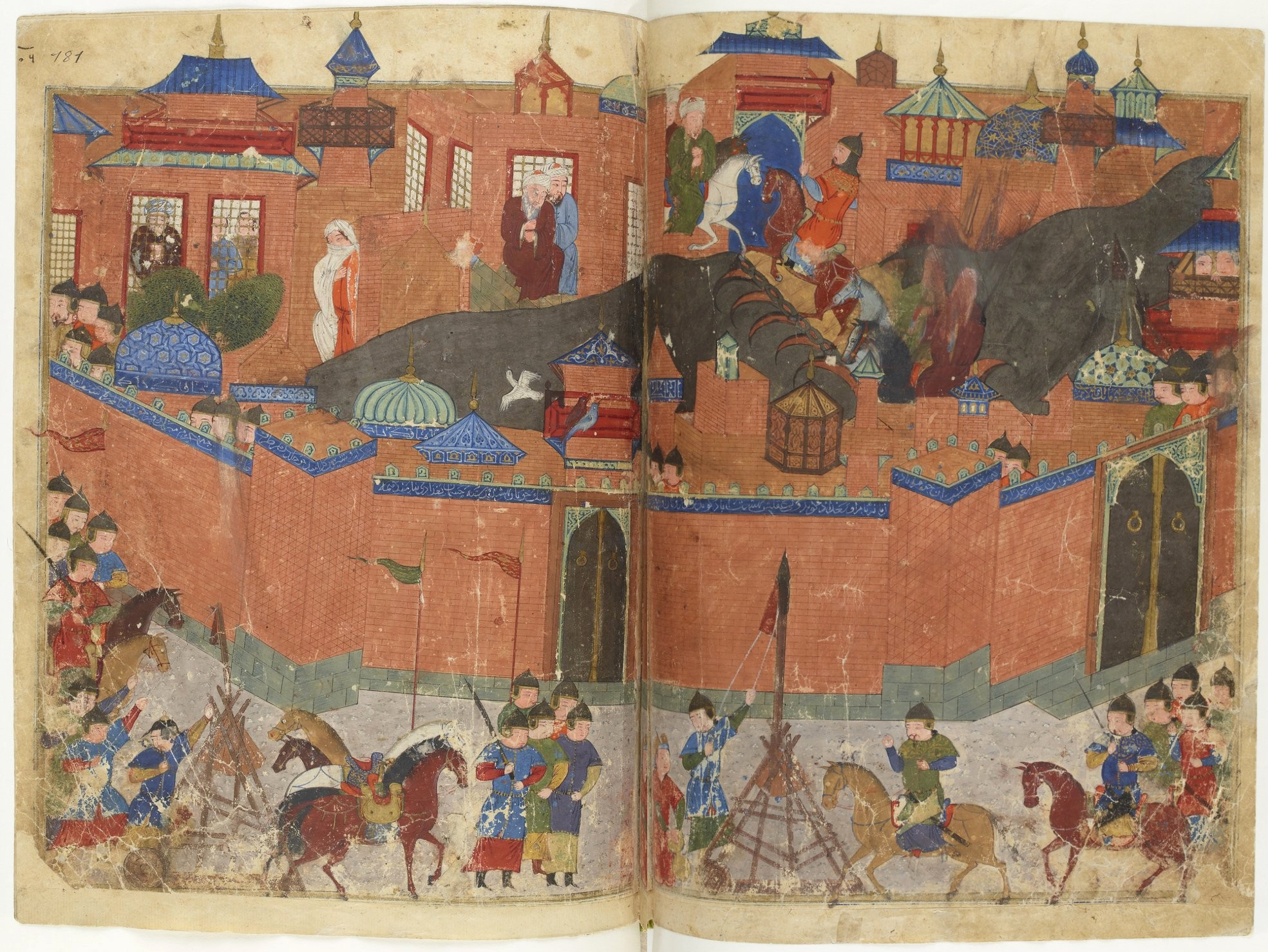|
Sharaf Ad-Din Ibn Al-Hasan
Sheikh Sharaf ad-Din ibn al-Hasan () was the son and religious heir of al-Hasan ibn ‘Adī and thus head of the ‘Adawiyya order. He died in battle against the Mongols in 1258 and was succeeded by his uncle, Fakhr ad-Dīn ibn ‘Adī. Due to the hostility of the Mongols, his son Zayn ed Din preferred not to become his successor and passed on the duties to Fakhr ad-Dīn ibn ‘Adī, who was married to a Mongol. The Sharfadin Temple is considered to be one of the oldest and most important Yazidi holy sites. Sherfedin is particularly revered in the Sinjar region. The Yazidi ''Qewlê Şerfedîn'' ("Hymn of Şerfedîn") identifies Şerfedîn with the Mahdi. In the hymn (''qewl''), Şerfedîn is currently staying in a cave and will emerge at the end of times. See also * List of Yazidi holy figures *List of Yazidi holy places This is a list of Yazidi temples across the world. Background Yazidis are an ethnoreligious group who live predominantly in northern Iraq. Their ... [...More Info...] [...Related Items...] OR: [Wikipedia] [Google] [Baidu] |
Sheikh
Sheikh ( , , , , ''shuyūkh'' ) is an honorific title in the Arabic language, literally meaning "elder (administrative title), elder". It commonly designates a tribal chief or a Muslim ulama, scholar. Though this title generally refers to men, there are also a small number of female sheikhs in history. The title ''Syeikha'' or ''Sheikha'' generally refers to women. In some countries, it is given as a surname to those of great knowledge in religious affairs, by a prestigious religious leader from a silsila, chain of Sufi scholars. The word is mentioned in the Qur'an in three places: verse 72 of Hud (surah), Hud, 78 of Yusuf (surah), Yusuf, and 23 of al-Qasas. A royal family member of the United Arab Emirates and some other Arab countries, also has this title, since the ruler of each emirate is also the sheikh of their tribe. Etymology and meaning The word in Arabic stems from a Semitic root, triliteral root connected with aging: , ''shīn-yā'-khā. The title carries the me ... [...More Info...] [...Related Items...] OR: [Wikipedia] [Google] [Baidu] |
Yazidi Holy Sites ...
This is a list of Yazidi temples across the world. Background Yazidis are an ethnoreligious group who live predominantly in northern Iraq. Their religion is known as Yazidism. List See also * List of Yazidi holy figures * List of Yazidi settlements References {{YazidisOutline * Yazidi Yazidi Yazidis, also spelled Yezidis (; ), are a Kurdish-speaking endogamous religious group indigenous to Kurdistan, a geographical region in Western Asia that includes parts of Iraq, Syria, Turkey, and Iran. The majority of Yazidis remaining in ... [...More Info...] [...Related Items...] OR: [Wikipedia] [Google] [Baidu] |
Yazidi Mythology
Yazidis, also spelled Yezidis (; ), are a Kurdish-speaking endogamous religious group indigenous to Kurdistan, a geographical region in Western Asia that includes parts of Iraq, Syria, Turkey, and Iran. The majority of Yazidis remaining in the Middle East today live in Iraq, primarily in the governorates of Nineveh and Duhok. There is a disagreement among scholars and in Yazidi circles on whether the Yazidi people are a distinct ethnoreligious group or a religious sub-group of the Kurds, an Iranic ethnic group. Yazidism is the ethnic religion of the Yazidi people and is monotheistic in nature, having roots in a pre-Zoroastrian Iranic faith. Since the spread of Islam began with the early Muslim conquests of the 7th–8th centuries, Yazidis have faced persecution by Arabs and later by Turks, as they have commonly been charged with heresy by Muslim clerics for their religious practices. Despite various state-sanctions in the Ottoman Empire, Yazidis historically have lived ... [...More Info...] [...Related Items...] OR: [Wikipedia] [Google] [Baidu] |
Year Of Birth Unknown
A year is a unit of time based on how long it takes the Earth to orbit the Sun. In scientific use, the tropical year (approximately 365 solar days, 5 hours, 48 minutes, 45 seconds) and the sidereal year (about 20 minutes longer) are more exact. The modern calendar year, as reckoned according to the Gregorian calendar, approximates the tropical year by using a system of leap years. The term 'year' is also used to indicate other periods of roughly similar duration, such as the lunar year (a roughly 354-day cycle of twelve of the Moon's phasessee lunar calendar), as well as periods loosely associated with the calendar or astronomical year, such as the seasonal year, the fiscal year, the academic year, etc. Due to the Earth's axial tilt, the course of a year sees the passing of the seasons, marked by changes in weather, the hours of daylight, and, consequently, vegetation and soil fertility. In temperate and subpolar regions around the planet, four seasons ar ... [...More Info...] [...Related Items...] OR: [Wikipedia] [Google] [Baidu] |
1258 Deaths
Year 1258 ( MCCLVIII) was a common year starting on Tuesday of the Julian calendar. Events By place Mongol Empire * February 10 – Siege of Baghdad: Mongol forces (some 150,000 men), led by Hulagu Khan, besiege and conquer Baghdad after a siege of 13 days. During the first week of February, the eastern walls begin to collapse, and the Mongols swarm into the city, on February 10. Caliph Al-Musta'sim surrenders himself to Hulagu – together with all the Abbasid chief officers and officials. They are ordered to lay down their arms, and are massacred. Hulagu imprisons Al-Musta'sim among his treasures, to starve him to death. Meanwhile, massacres continue throughout the whole city; in 40 days about 80,000 citizens are murdered. The only survivors are the ones who are hiding in cellars which are not discovered, and a number of attractive girls and boys who are kept to be slaves, and the Christian community, who take refuge in the churches which are left undisturbed, ... [...More Info...] [...Related Items...] OR: [Wikipedia] [Google] [Baidu] |
List Of Yazidi Holy Places ...
This is a list of Yazidi temples across the world. Background Yazidis are an ethnoreligious group who live predominantly in northern Iraq. Their religion is known as Yazidism. List See also * List of Yazidi holy figures * List of Yazidi settlements References {{YazidisOutline * Yazidi Yazidi Yazidis, also spelled Yezidis (; ), are a Kurdish-speaking endogamous religious group indigenous to Kurdistan, a geographical region in Western Asia that includes parts of Iraq, Syria, Turkey, and Iran. The majority of Yazidis remaining in ... [...More Info...] [...Related Items...] OR: [Wikipedia] [Google] [Baidu] |
List Of Yazidi Holy Figures
This is a list of holy figures () in Yazidism. There are a total of 365 Yazidi holy figures venerated by Yazidis. Many Yazidi tribes and lineages are named after Yazidi holy figures and there are many temples and shrines built in their honor. Holy figures in Yazidism are designated by various special terms including ''Babçak'', ''Xudan'' (lord, master, owner, holder, proprietor, protector, deity), ''Xas'' (selected, notable, special, elite) and ''Mêr'' which translates to (holy) man. According to Yazidi belief God is almighty and absolute, and the Xudans are a part of His power, moreover, in relation to nature, Yazidis believe in ''Xudans'' for most of natural elements and phenomena and they are regarded as divine powers that have control over these phenomena. In Yazidi mythology, the ''Xudan''s appeared after the creation of the world for the four elements of nature and their manifestations. Sheikhs Below is a list of Yazidi holy figures belonging or associated with Sheik ... [...More Info...] [...Related Items...] OR: [Wikipedia] [Google] [Baidu] |
Mahdi
The Mahdi () is a figure in Islamic eschatology who is believed to appear at the Eschatology, End of Times to rid the world of evil and injustice. He is said to be a descendant of Muhammad in Islam, Muhammad, and will appear shortly before Jesus in Islam, Jesus. The Mahdi is mentioned in several List of hadith Books, canonical compilations of hadith, but is absent from the Quran and the two most-revered Kutub al-Sittah, Sunni hadith collections, ''Sahih al-Bukhari'' and ''Sahih Muslim''. As such, some Sunni theologians have questioned the orthodoxy of the Mahdi. The doctrine of the Mahdi seems to have gained traction during the confusion and unrest of the religious and political upheavals of the first and second centuries of Islam. Some of the first references to the Mahdi appear in the late 7th century, when the revolutionary Mukhtar al-Thaqafi declared Muhammad ibn al-Hanafiyya, a son of Caliphate, Caliph Ali (), to be the Mahdi. Although the concept of a Mahdi is not an essen ... [...More Info...] [...Related Items...] OR: [Wikipedia] [Google] [Baidu] |
Sinjar District
The Sinjar District or the Shingal District (, ) is a district of the Nineveh Governorate. The district seat is the town of Sinjar. The district has two subdistricts, al-Shemal and al-Qayrawan. The district is one of two major population centers for Yazidis, the other being Shekhan District. History Sinjar District was created in 1934 by Royal decree. After the 1935 Yazidi revolt, the district was placed under military control.Fuccaro, Nelinda''Ethnicity, State Formation, and Conscription in Postcolonial Iraq: The Case of the Yazidi Kurds of Jabal Sinjar'' International Journal of Middle East Studies Vol. 29, No. 4 (November 1997), pp. 559–580. The al-Shamal district, originally formed in 1936, was abolished in 1987, and its area was added to Sinjar. Qayrawan was formed as a district in 1977, was also abolished in 1987, and was added to the district. In 1994, al-Shamal and Qayrawan were reformed as a sub-districts. In 2007, several explosions set off by ISI killed hundred ... [...More Info...] [...Related Items...] OR: [Wikipedia] [Google] [Baidu] |
Abbasid Dynasty
The Abbasid dynasty or Abbasids () were an Arab dynasty that ruled the Abbasid Caliphate between 750 and 1258. They were from the Qurayshi Hashimid clan of Banu Abbas, descended from Abbas ibn Abd al-Muttalib. The Abbasid Caliphate is divided into three main periods: Early Abbasid era (750–861), Middle Abbasid era (861–936) and Later Abbasid era (936–1258). A cadet branch of the dynasty also ruled as ceremonial rulers for the Mamluk Sultanate (1261–1517) until their conquest by the Ottoman Empire. Ancestry The Abbasids descended from Abbas, one of Muhammad's companions (as well as his uncle) and one of the early Qur'an scholars. Therefore, their roots trace back to Hashim ibn 'Abd Manaf and also Adnan in the following line: Al-‘Abbas ibn Abdul-Muttalib ibn Hashim ibn Abd Manaf ibn Qusai ibn Kilab ibn Murrah ibn Ka'b ibn Lu'ay ibn Ghalib ibn Fihr ibn Malik ibn An-Nadr ibn Kinanah ibn Khuzaima ibn Mudrikah ibn Ilyas ibn Mudar ibn Nizar ibn Ma'add ibn Ad ... [...More Info...] [...Related Items...] OR: [Wikipedia] [Google] [Baidu] |







